Land Invertebrates
Media
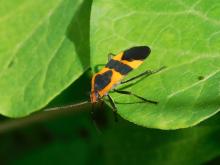
Species Types
Scientific Name
About 80 species in North America north of Mexico
Description
Seed bugs are named because most species in their family eat seeds. Included in this group of true bugs are the colorful milkweed bugs but also several less exciting brownish bugs.
Media
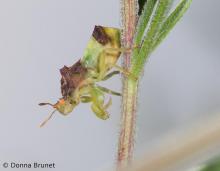
Species Types
Scientific Name
Phymata spp. and others in subfamily Phymatinae (ambush bugs)
Description
Ambush bugs are a subfamily of assassin bugs. They’re chunky, small insects with powerful grasping forelegs. They hide motionless in flowers waiting for prey to venture near.
Media

Species Types
Scientific Name
Arilus cristatus
Description
The wheel bug is a large gray or brown insect that carries something interesting on its back: Is it a cog, or a wheel, or a circular saw blade?
Media

Species Types
Scientific Name
More than 5,000 species in North America
Description
Most ichneumon wasps are harmless, although the long ovipositor of the female is intimidating. Their larvae live as parasites inside caterpillars and other larval insects.
Media
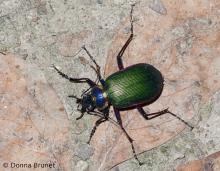
Species Types
Scientific Name
About 2,400 species in North America north of Mexico
Description
Ground beetles are a family of mostly nocturnal or light-shunning beetles that tend to be shiny black and have grooved wing covers. This group also includes tiger beetles, however, which includes many colorful daytime fliers.
Media
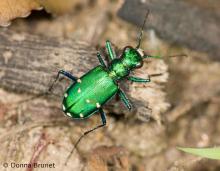
Species Types
Scientific Name
Subfamily Cicindelinae (about 100 species in North America)
Description
Dizzyingly fast runners and fliers, tiger beetles are remarkable, and often very colorful, insect predators.
Media
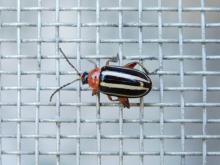
Species Types
Scientific Name
About 2,000 species in North America
Description
Leaf beetles, or chrysomelid beetles, are members of a large, diverse, often very colorful beetle family. As the name suggests, they eat leaves and other plant parts and are common on foliage.
Media

Species Types
Scientific Name
Popillia japonica
Description
Despite its decorative bronze wing shields, metallic green thorax, and black-and-white striped abdomen, the Japanese beetle is a serious agricultural pest.
Media

Species Types
Scientific Name
Bombus spp.
Description
Bumblebees are like huge honeybees: They are yellow and black, collect pollen and nectar, live in colonies, and make honey. They are capable of stinging, if molested or if their nest is endangered, but you need not fear them; they are not aggressive.
Media
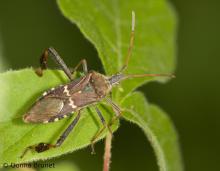
Species Types
Scientific Name
Nearly 90 species in North America north of Mexico
Description
Leaf-footed bugs are a large family of true bugs that are named for the flattened, leaflike extensions that many have on their hind legs. They fly well, and many smell bad when handled. Squash bugs are a famous member of this group.
See Also



Media

Species Types
Scientific Name
Cisseps fulvicollis
Description
The yellow-collared scape moth is more often “orange-collared.” And whether you think it looks more like a firefly or a wasp, it’s still a moth!
Media

Species Types
Scientific Name
Nearly 150 species in North America north of Mexico
Description
Slim, delicate plume moths are instantly recognizable by their T-shaped silhouette, long legs, and muted shades of tan and brown. It can be hard to separate the various species.
Media

Species Types
Scientific Name
Pyrrharctia isabella
Description
Not many people know the adult Isabella tiger moth when they see one, but we’re all acquainted with its caterpillar, the woolly worm, or woolly bear.
About Land Invertebrates in Missouri
Invertebrates are animals without backbones, including earthworms, slugs, snails, and arthropods. Arthropods—invertebrates with “jointed legs” — are a group of invertebrates that includes crayfish, shrimp, millipedes, centipedes, mites, spiders, and insects. There may be as many as 10 million species of insects alive on earth today, and they probably constitute more than 90 percent all animal species.





















